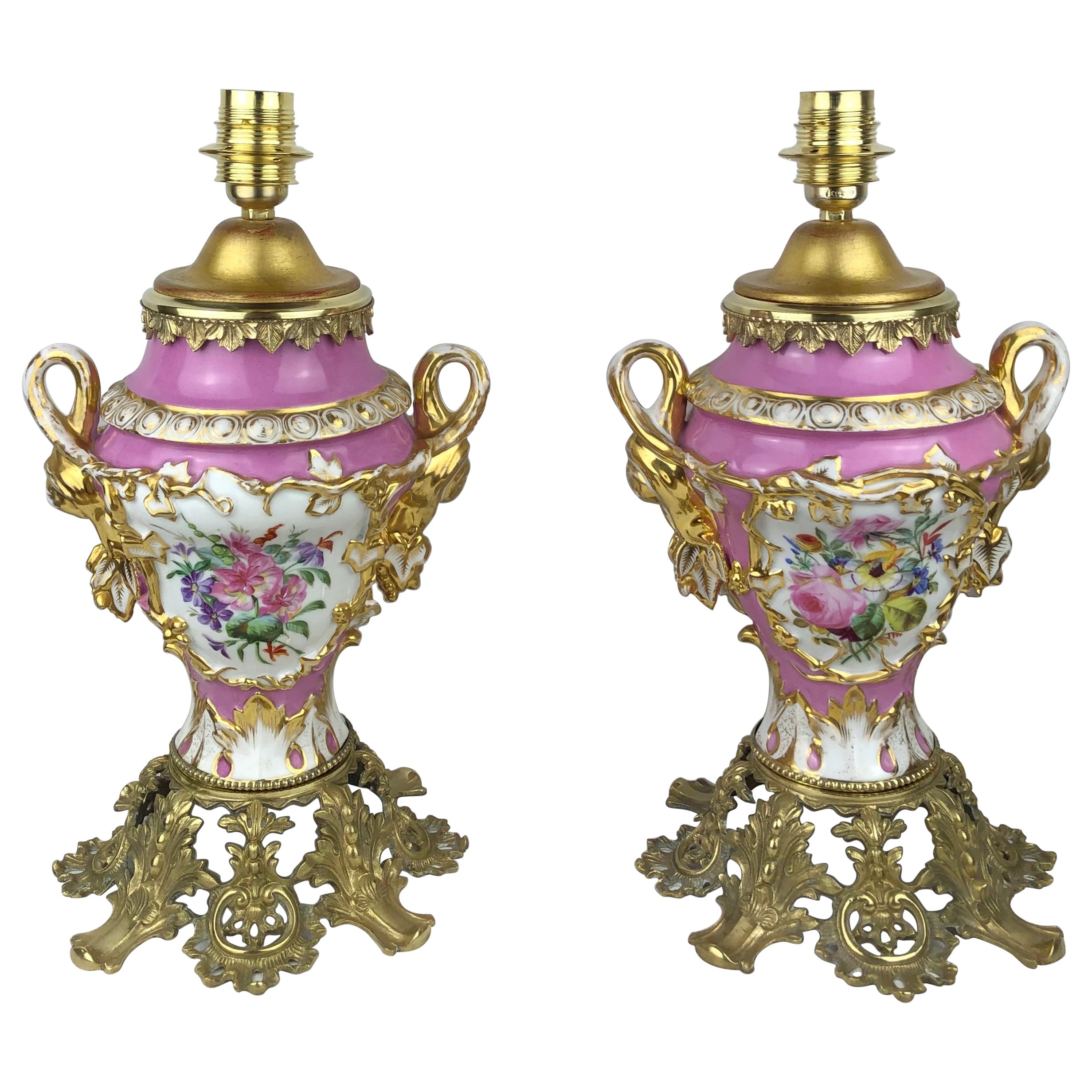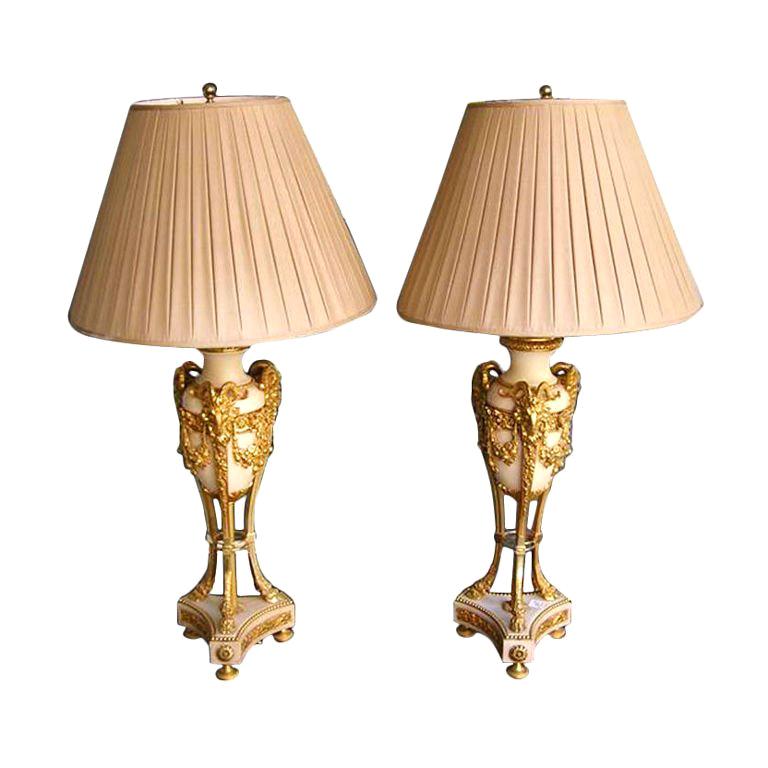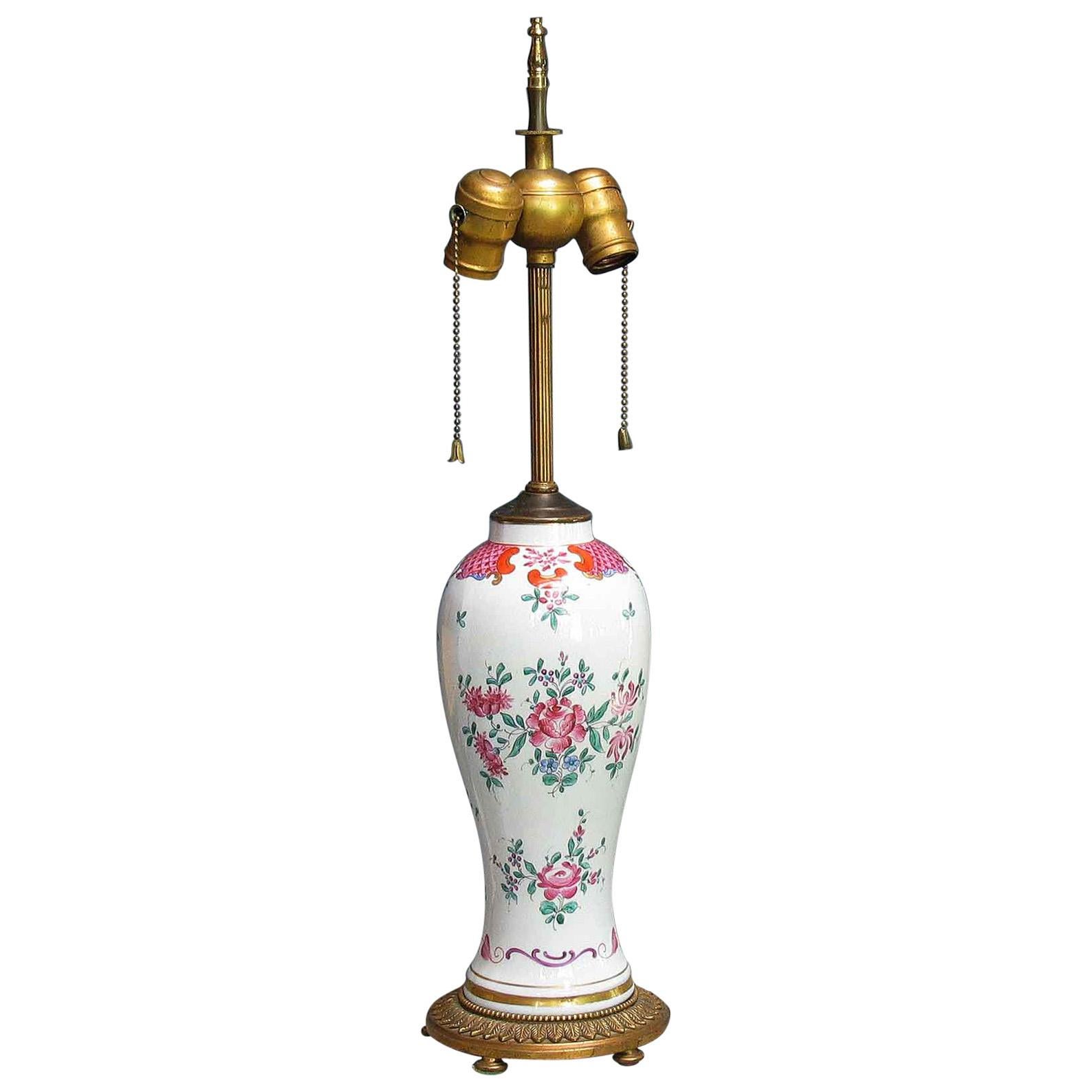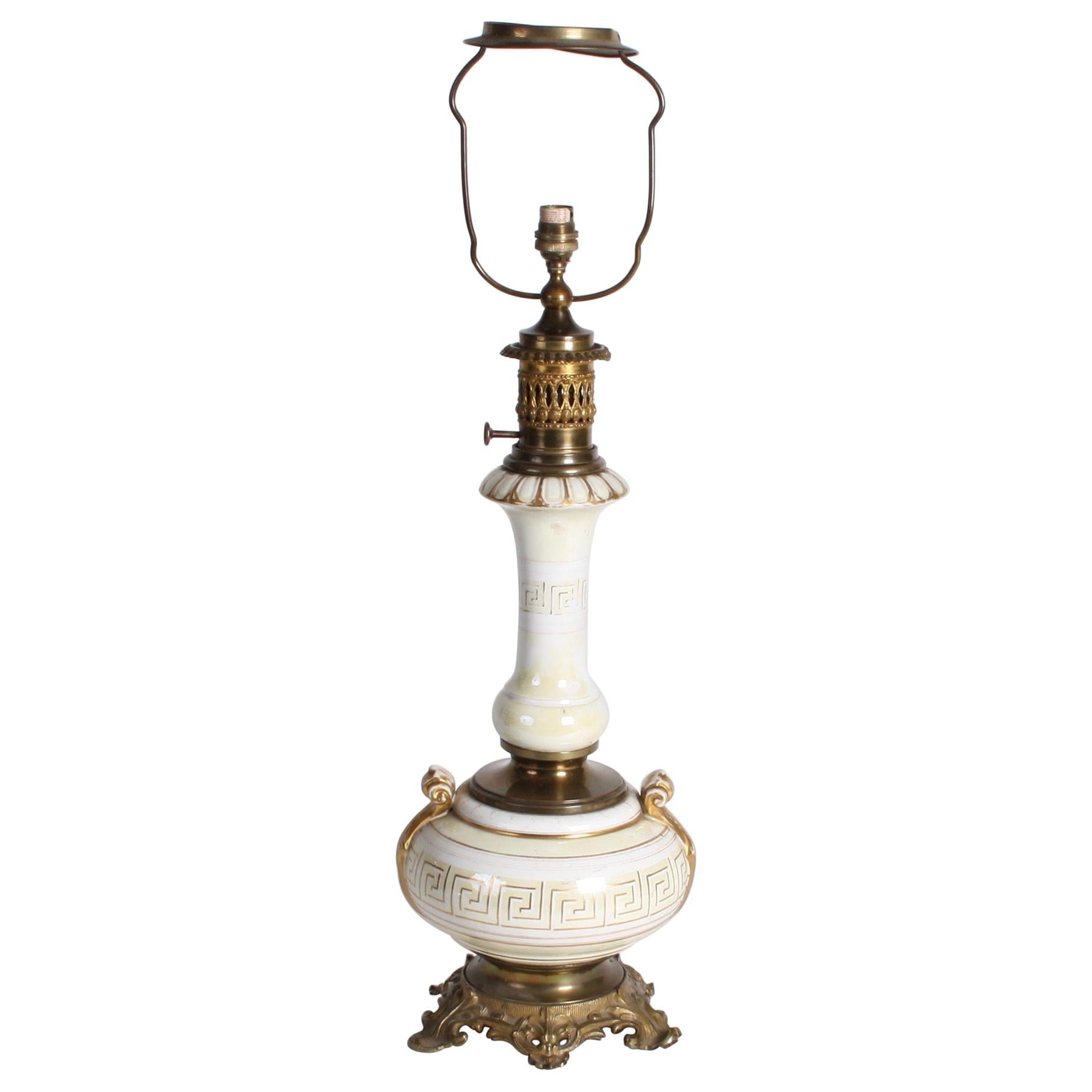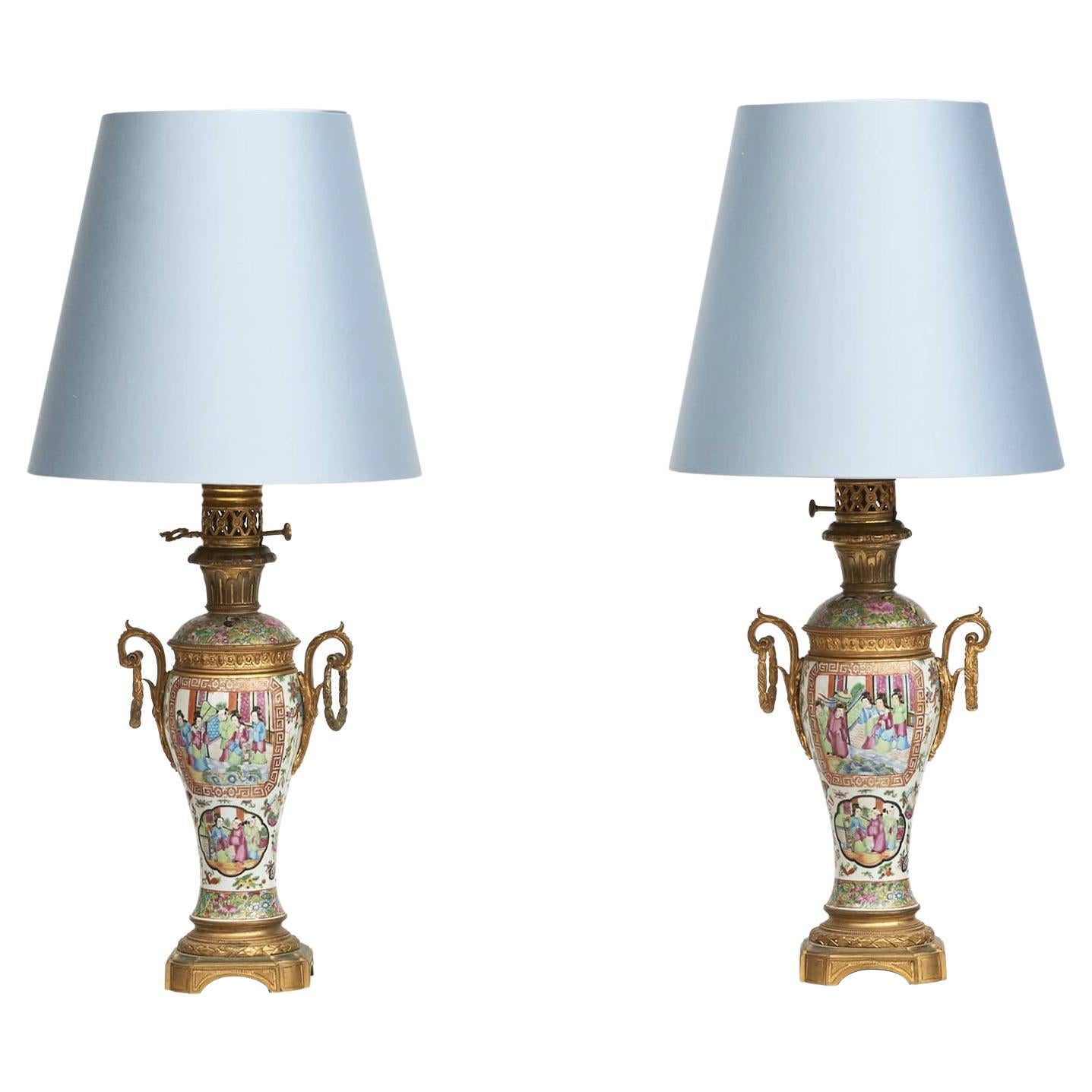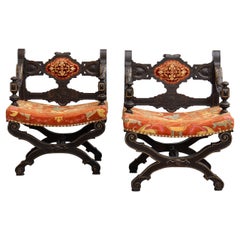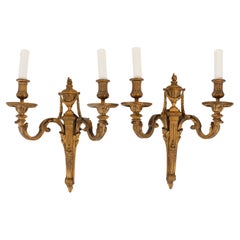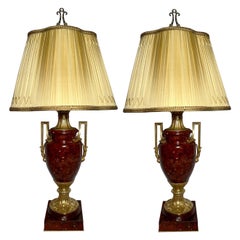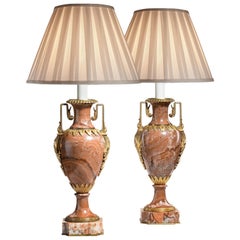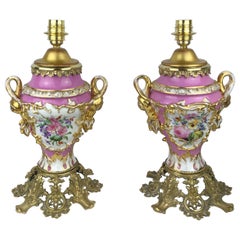
French Napoléon III Ormolu-Mounted Pair of Lamps, circa 1860
View Similar Items
Want more images or videos?
Request additional images or videos from the seller
1 of 15
French Napoléon III Ormolu-Mounted Pair of Lamps, circa 1860
About the Item
- Attributed to:Victor Paillard (Maker)
- Dimensions:Height: 20.48 in (52 cm)Width: 7.88 in (20 cm)Depth: 7.09 in (18 cm)
- Sold As:Set of 2
- Style:Napoleon III (Of the Period)
- Materials and Techniques:
- Place of Origin:
- Period:
- Date of Manufacture:circa 1860
- Condition:
- Seller Location:Saint-Ouen, FR
- Reference Number:1stDibs: LU2612322152092
About the Seller
4.9
Vetted Seller
These experienced sellers undergo a comprehensive evaluation by our team of in-house experts.
1stDibs seller since 2017
57 sales on 1stDibs
Typical response time: 1 hour
More From This SellerView All
- Pair of Porcelain Vases Ormolu-Mounted in Lamps by Gagneau Paris XIXth CenturyBy Gagneau ParisLocated in Saint-Ouen, FRPair of large Japanese Porcelain Cone Shape Vases with Imari decoration Important mounts in ormolu and gilded metal, the base decorated with a laurel wreath, the upper part of falling leaves and a frieze of knotted ribbon. The mounts signed Gagneau, 115 R. Lafayette. Circa 1860 With their original aluminium bulb cover and original gilding Vase it self Height 47 cm The Gagneau Company is one of the most famous lighting factories in Paris in the nine-teenth century, established in 1800 at 25 rue d'Enghien in Paris and later at 115 rue de Lafayette. She has participated in many exhibitions throughout this century. She began in 1819 with the Exposition des Produits de l'Industrie and later participated in the Universal Exhibitions where she was part of the jury in the category of art bronzes (class 25) at the Universal Exhibition in Paris in 1889. "Imari" was simply the trans-shipment port for Arita wares, from where they went to the for-eign trading outposts at Nagasaki. It was the kilns at Arita which formed the heart of the Japanese porcelain industry. Arita's kilns were set up in the 17th century, after kaolin was discovered in 1616. A popular legend attributes the discovery to an immigrant Korean potter, Yi Sam-Pyeong (1579–1655), although most historians consider this doubtful. After the discovery, some kilns began to produce revised Korean-style blue and white porcelains, known as Early Imari, or "Shoki-Imari". In the mid-17th century, there were also many Chinese refugees in northern Kyushu due to the turmoil in China, and it is said that one of them brought the overglaze enamel coloring technique to Arita. Thus Shoki-Imari developed into Ko-Kutani, Imari, and later Kakiemon, which are sometimes taken as a wider group of Imari wares. Ko-Kutani was produced around 1650 for both export and domestic market.Kutani Ware is characterized by vivid green, blue, purple, yellow and red colors in bold designs of landscapes and nature. Blue and white porcelain pieces continued to be produced and they are called Ai-Kutani. Ko-Kutani Imari for the export market usually adopted Chinese design structure such as kraak style, whereas Ai-Kutani for the domestic market were highly unique in design and are ac-cordingly valued very much among collectors. Ko-Kutani style evolved into Kakiemon-style Imari, which was produced for about 50 years around 1700. Kakiemon was characterized by crisp lines, and bright blue, red and green designs of dramatically stylized floral and bird scenes. Imari achieved its technical and aes-thetic peak in the Kakiemon style, and it dominated the European market. Blue and white Kakiemon is called Ai-Kakiemon. The Kakiemon style transformed into Kinrande in the 18th century, using underglaze blue and overglaze red and gold enamels, and later additional colors. Imari began to be exported to Europe when the Chinese kilns at Jingdezhen were damaged in the political chaos and the new Qing dynasty government halted trade in 1656–1684. Ex-ports to Europe were made through the Dutch East India Company, and in Europe the des-ignation "Imari porcelain" connotes Arita wares of mostly Kinrande Imari. Export of Imari to Europe stopped in mid-18th century when China resumed export to Europe, since Imari was not able to compete against Chinese products due to high labor costs. By that time, however, both Imari and Kakiemon styles were already so popular among Eu-ropeans that the Chinese export porcelain copied both, a type known as Chinese Imari. At the same time, European kilns, such as Meissen and English potteries such as Johnson Bros. and (Royal) Crown Derby, also imitated the Imari and Kakiemon styles. Export of Imari surged again in late 19th century (Meiji era) when Japonism flourished in Europe.Thus, in the western world today, two kinds of true Japanese Imari can...Category
Antique 1880s French Japonisme Table Lamps
MaterialsBronze
- Pair of French Napoléon III Curule ArmchairsLocated in Saint-Ouen, FRPair of French Napoléon III Curule Armchairs Moulded, carved, blackened wood, enhanced with gold. Open-banded back decorated with interlacing, X-bas...Category
Antique 1890s French Napoleon III Armchairs
MaterialsWood, Trimming
- French Pair of Napoleon III Ormolu Wall-Lights after Jean-Charles DelafosseBy Jean-Charles DelafosseLocated in Saint-Ouen, FR19th Century French Pair of chiseled and gilded bronze wall-lights, the fluted barrel, from which acanthus leaves escape in scrolls forming two arms of light, and crowned with a fire pot, neck-shovels with twisted flutes, heart, hoes with leaves of water. Circa 1880 Parisian quality work of the late nineteenth century after a model by Jean-Charles Delafosse (1734-1791), famous french architect, ornamentist and painter. Original gilding Electrified H 40 cm L 36 cm P 20 cm The model of our sconces takes the creations of 18th century bronzers who were directly inspired by the drawings of Jean-Charles Delafosse in the 1760s. In particular, the collection of engravings...Category
Antique 1880s French Louis XVI Wall Lights and Sconces
MaterialsOrmolu
$2,464 Sale Price / set20% Off - A French Napoléon III Ormolu Cartel Clock by Susse Frères Paris circa 1870By Susse FreresLocated in Saint-Ouen, FRA French 19th Century Cornucopia Gilt-Bronze Cartel, by Susse Frères Paris An Ormolu Cartel in the shape of an escutcheon, with a circular white enamel dial, signed Susse Frères/A Paris, Arabic numerals for the hours and for the minutes. It's bordered by a frieze of pearls and surmounted by a falling laurel knot with a drapery in the lower part and flanked by cornucopias adorned with flowers and fruits. Rectangular base decorated with a garland of knotted flowers dying in a tapered, fluted barrel and damping, in the upper part, a flowery Medici vase. Louis XVI Style Circa 1870 Original gilding uncleaned The Susse company, a worldwide reknown foundry, began to cast pieces as soon as the first half of the 19th Century. Awarded medals...Category
Antique 1860s French Louis XVI Wall Clocks
MaterialsOrmolu
- A Very Fine Quality 19th Century French Pair of CandlesticksLocated in Saint-Ouen, FRVery Fine French 19th Century Pair of Candlesticks In ormolu, very finely chiseled and decorated with knotted garlands, branches of leafy flowers, spokes of hearts, leaves of water...Category
Antique 1870s French Louis XVI Candlesticks
MaterialsOrmolu
- Émile GALLE (1846-1904) "Paysage Vosgien" Glass Lamp circa 1900By Emile GalléLocated in Saint-Ouen, FRÉmile GALLE (1846-1904) "Paysage Vosgien" A multilayer glass lamp by Gallé With an etched decor of a green and blue Vosgien landscape on the foot and of flying eagles on the lamps...Category
Antique Early 1900s French Art Nouveau Table Lamps
MaterialsBronze
You May Also Like
- Pair Antique French Napoleon III Ormolu Mounted Red Marble Lamps w/ Silk ShadesLocated in New Orleans, LAPair antique French Napoleon III Classic style red marble and ormolu mounted lamps with handmade silk shades, circa 1875-1885.Category
Antique Late 19th Century French Napoleon III Table Lamps
MaterialsMarble, Ormolu
- Pair of Good Napoleon III Rouge Marble VasesLocated in Lymington, HampshireA pair of good Napoleon III rouge marble vases, each mounted in ormolu with a pair of square bracket handles and collars of pointed leaves, now fitted for electricity. French, circa ...Category
Antique 1870s French Napoleon III Table Lamps
MaterialsOrmolu
- Sevres Porcelain Ormolu Mounted Pair of 19th Century Table Lamps, FrenchBy Manufacture Nationale de SèvresLocated in Miami, FLPair of fine quality 19th Century Louis XVI style Sevres porcelain ormolu mounted table lamps. Traditional French porcelain. These beautiful h...Category
Antique 19th Century French Louis XVI Table Lamps
MaterialsBronze
$2,880 Sale Price / set49% Off - Pair of French Cassolettes Marble and Ormolu Bronze Table Lamps. Circa 1810Located in Hollywood, SCPair of French cassolettes marble and ormolu bronze table lamps with rams head mounts, floral ribbon swags, hoof feet, and terminatin...Category
Antique 1810s French Louis XVI Table Lamps
MaterialsMarble, Ormolu
- Large Pair of French Onyx and Ormolu LampsLocated in Lymington, HampshireA large pair of onyx and ormolu lamps, each with a central fluted column surmounted by a sconce and supporting six further ornate branches of lights, all r...Category
Vintage 1910s French Table Lamps
MaterialsOnyx, Ormolu
$13,066 / set - Porcelain Ormolu Mounted Chinese LampLocated in Ottawa, OntarioA porcelain ormolu-mounted Chinese export style vase Now mounted as a lamp Early 20th century, probably Samson The vase is in the form of a meiping In the Chinese export famil...Category
Early 20th Century Chinese Chinese Export Table Lamps
MaterialsPorcelain
Recently Viewed
View AllMore Ways To Browse
Wood Finland Lamp
Poul Henningsen Opal
Fouquieres Lamp
Harry Balmer Brutalist Lamp
Lebe Table
Contemporary Dining Table Gold
Antique Gilt Bronze Lamp
Argentinian Lamp Table
Nautical Brass Lamp
Early Bird Gallery Lighting
Etched Brass Table Lamps Wood Base
Atollo Lamp 233
Glustin Luminaires France
Tole Peinte Table Lamps
Hermes 1920s Chairs
Giocometti Lamp
Period Table Lamps
Eu Countries


